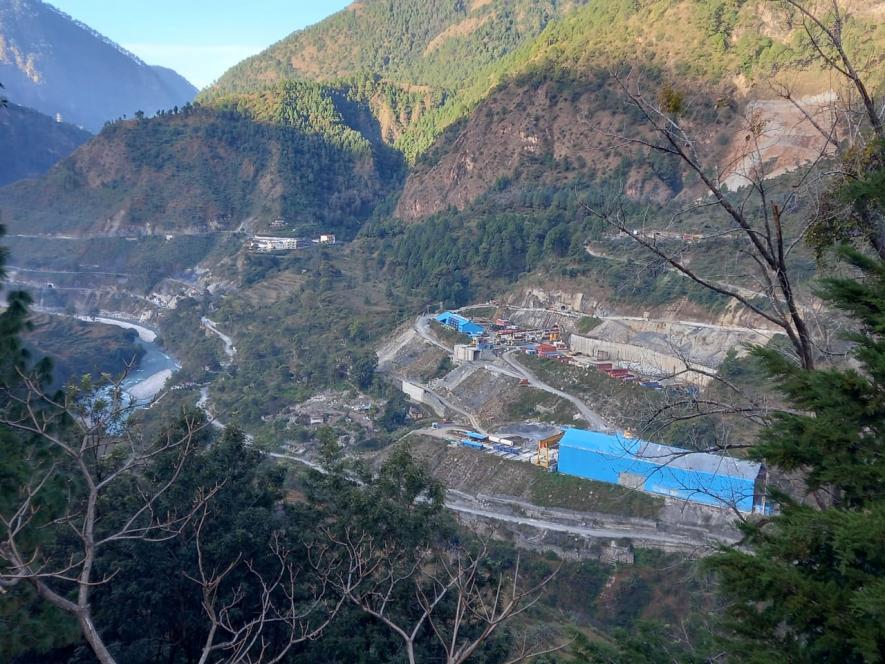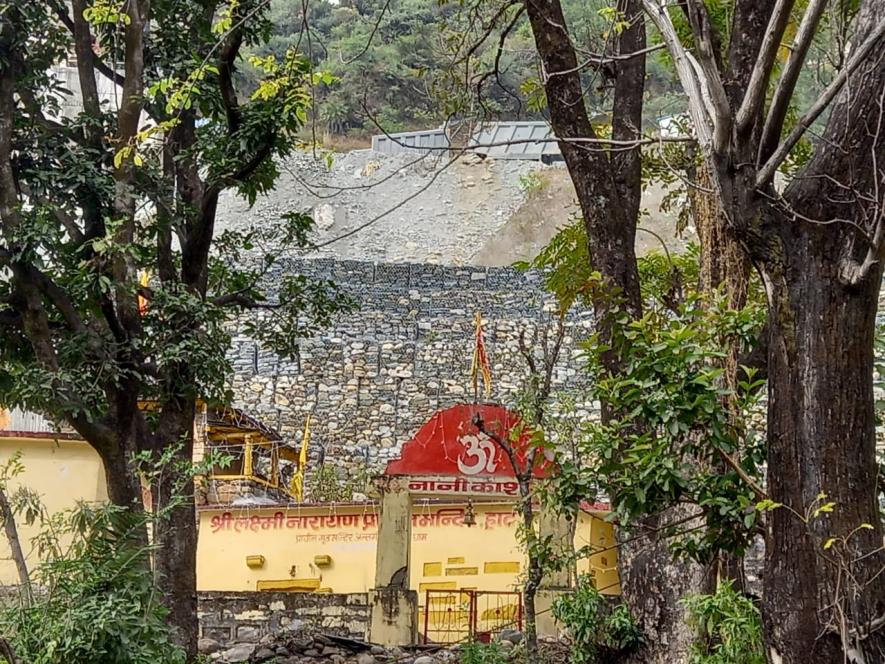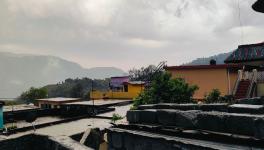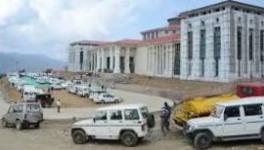ASI Flags use of Uttarakhand Village as Dumping Site of Power Project

Haat village in Chamoli district of Uttarakhand was designated a dumpsite for the 444 MW Vishnugad Pipalkoti Hydro Electric Power Project.
Haat village in Chamoli district of Uttarakhand once used to brim with vivacity until it was designated a dumpsite for the 444 MW Vishnugad Pipalkoti Hydro Electric Power Project, which was to be executed by Tehri Hydro Development Corporation (THDC) on Ganges River Basin’s Alaknanda river.
Houses were razed and around 140 families were relocated in patches after 2008 till last year as part of the project, whose estimated cost has escalated from Rs 2,491.58 crore to Rs 3,860.35 crore as on July 31, 2021, due to the prolonged process of acquisition. It is likely to be completed by December 2024.
The villagers allege that the way muck is dumped in the village, around the Lakshmi Narayan Temple—which they claim was established by Adi Shankaracharya during the ninth century and represents “a sacred bond and heritage”—and a group of temples nearby established by their ancestors centuries ago may cause “irreversible destruction” to the places of worship.

The villagers claim that the Lakshmi Narayan Temple was established by Adi Shankaracharya during the ninth century.
Their claims have been reinforced in a new report submitted by Archaeological Survey of India (ASI) which also stated that the wall behind the temple appears to be “inadequate to withstand the thrust of the dumped soil/waste material. The pressure may increase during the rainy season due to formation of aquifer within the soil”.
Manoj Kumar Saxena, superintending archaeologist, ASI Dehradun circle, suggested that the dumping area should be away from the temple complex. “THDC should stop dumping muck and construct an outer boundary away from the main temple and subsidiary shrines for better preservation and protection of shrines,” he says.
Ramanie Kunanayagam, chairperson of the inspection panel of the World Bank, has agreed to look into the grievances of 83 community members after the ASI report was brought its notice. The grievances primarily include muck dumping, which is threatening the stability and the existence of the temple, worsening economic condition of the displaced people and the allegation of limited accessibility to water.
Village pradhan Rajender Hatwal says, “The villagers had been under the impression for all these years that the entire village land has been acquired to be submerged just like Tehri Dam by THDC.” However, the villagers have “shockingly realised that the land was acquired to dump muck and store project items. People were kept in the dark for all these years”, he adds.
THDC failed to explore alternative dumpsites. According to a 2022 survey, the corporation ignored an alternative site that is allegedly more stable, uninhabited and closer to the river.
Noted environmentalist Hemant Dhyani says, “It is so unfortunate to see that Haat village, which is of immense archaeological significance due to its connection to Adi Shankaracharya, has been relegated to the status of a muck dumping zone.”
According to Dhyani, the last remaining families, including the temple priest, who were reluctant to move were “forcibly evicted”. “The social and cultural life of villagers has been ruined. THDC should have looked for other alternatives instead of choosing a vibrant village for dumping muck.”
The recent survey, conducted among 92 of the project-affected households, also recorded the alleged impact on their livelihood. The displaced villagers say that their economic condition has worsened due to the project. “People had to clear patches of their agriculture land to make space for building homes. Their livelihood options were also limited after the relocation,” Hatwal alleged.
Besides, the availability of water has been affected. “Seventy of the 92 households report that they now only receive water up to two hours daily and that 12 receive water two-to-five hours daily. Whereas, before the project commenced, they had daylong access to water supply,” the survey mentions while also stressing that the project has not accounted for the increased threat of climate change-induced disasters and extreme weather events.
“Water is pumped twice daily from the river to a water tank in the resettled area by THDC. But how can two tankers containing a few hundred litres of water meet the requirement of 80-plus families?” asks deputy pradhan Pinki Devi. “People are finally admitting their mistake of being gullible and relocating away from their land. Now, they want to return to their homeland and stay together.”
A massive controversy erupted in Helang village a few days ago when two local women were prevented by the project’s security guards and the police from collecting fodder from pastures situated at the dumping site. Villagers protested and accused the project proponent companies of violating their rights with tacit approval of the state government.
The writer is a freelance journalist.
Get the latest reports & analysis with people's perspective on Protests, movements & deep analytical videos, discussions of the current affairs in your Telegram app. Subscribe to NewsClick's Telegram channel & get Real-Time updates on stories, as they get published on our website.
























